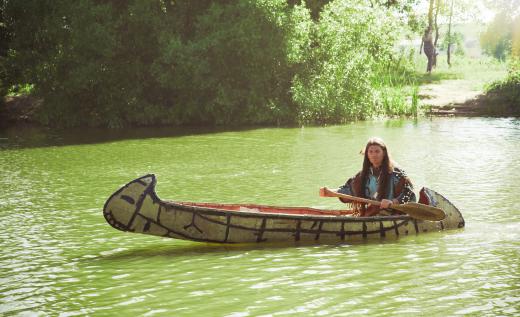What is Marine Archaeology?
 Michael Anissimov
Michael Anissimov
Marine archaeology, also known as maritime archaeology, is the study of underwater artifacts and landscapes. Often, this means studying shipwrecks, though other interesting submarine archaeological features have been revealed as well, such as the remains of prehistoric campsites in the North Sea, or debris left when an earthquake liquefies the land under a port town, such as Port Royal in the Antilles. Usually, artifacts underwater decay quickly, but in some cases, as few as one in several hundred, the preservation is remarkable, and artifacts that would have decayed or been plundered long ago if on land still remain. One famous example is the wreck of the Mary Rose, a Tudor-era warship that sunk in a battle with the French in 1545.
Some of the most fascinating archaeological evidence of the ancient world comes from very old shipwrecks with preserved materials. The oldest shipwrecks to be investigated in the field of marine archaeology are from the Bronze Age, with some ships and canoes dating back to 1400 BCE or earlier. One of the most famous is the Uluburun Shipwreck, a well-preserved shipwreck off the southern coast of Turkey with an extensive cargo. The cargo included elephant ivory, hippopotamus ivory, copper ingots, tin ingots, unworked glass, Egyptian ebony, gold, ostrich eggs, terebinth resin, ivory vessels, a gold chalice, various jugs, lamps, and vases, an Italian sword, European spears, a stone ceremonial axe, and more. Such large finds of intact material are very rare in above-surface archaeology, the discovery of the tombs of the pharaohs being one of the primary and only examples.

The next major class of impressive shipwrecks in marine archaeology are those from the Late Bronze Age and early Iron Age of Greece and Rome. The huge pleasure barges of the Roman Emperor Caligula have been uncovered in Lake Nemi, Italy, where the fresh water lends itself to better preservation of the wood and artifacts. One of these (fragmentary) barges was 104 m (341 ft) long, the third largest wooden ship ever built, with a larger ship not being constructed until about 1,800 years later. Called "Caligula's Giant Ship," it was six decks high and could hold over 1,000 people. Caligula's Giant Ship has come to symbolize the hedonism and selfishness of Caligula and other Roman Emperors such as Nero.

One frequent, highly speculative association of marine archaeology in the public mind is that with the possible discovery of Atlantis. Though Atlantis was clearly a literary device invented by Plato to describe his ideal society, for thousands of years many people have been fooled into thinking it actually existed, which has prompted extensive underwater investigations. Some of these investigations have actually turned up some interesting artifacts, but in every case they have been associated with known cultures of the ancient world, never an entirely novel and undiscovered culture.
AS FEATURED ON:
AS FEATURED ON:












Discussion Comments
@irontoenail - There are a few places where ancient artifacts have been found in the ocean, but it's usually the more recent ones that capture the imagination.
One thing I've always found interesting is that UNESCO has essentially declared that any human remains or examples of activity that are underwater and more than a hundred years old should be considered to be protected. I know there are a lot of treasure hunters out there who wouldn't want to abide by that law.
@clintflint - I always go straight to Snopes to see if it's a hoax if it sounds too good to be true. But there have been some incredible things found under the ocean. The Mary Rose is an excellent example.
There's no reason we won't eventually find a lot of fossils and things like that under the water as well, since the geography of the Earth changes over time. Even if most human artifacts will decay under salt water, there are still chances that bones trapped in sediment will survive the way that shells do.
It's kind of bizarre how people have stuck to the idea of Atlantis even though there is very clear evidence that it was completely invented by Plato to prove a point.
It would be like if people a couple of hundred years from now insisted that Metropolis (where superheros live) was a real place that they just hadn't uncovered yet.
It seems like every couple of years I hear another person claim that they've found evidence of ancient archaeology under the ocean that could lead to Atlantis. The last one I saw a few months ago was something about crystal pyramids that was apparently completely invented.
Post your comments